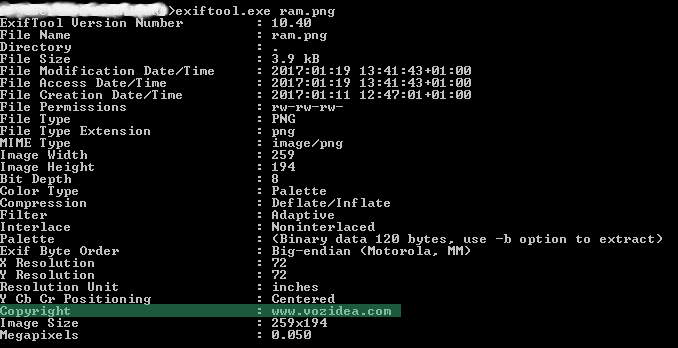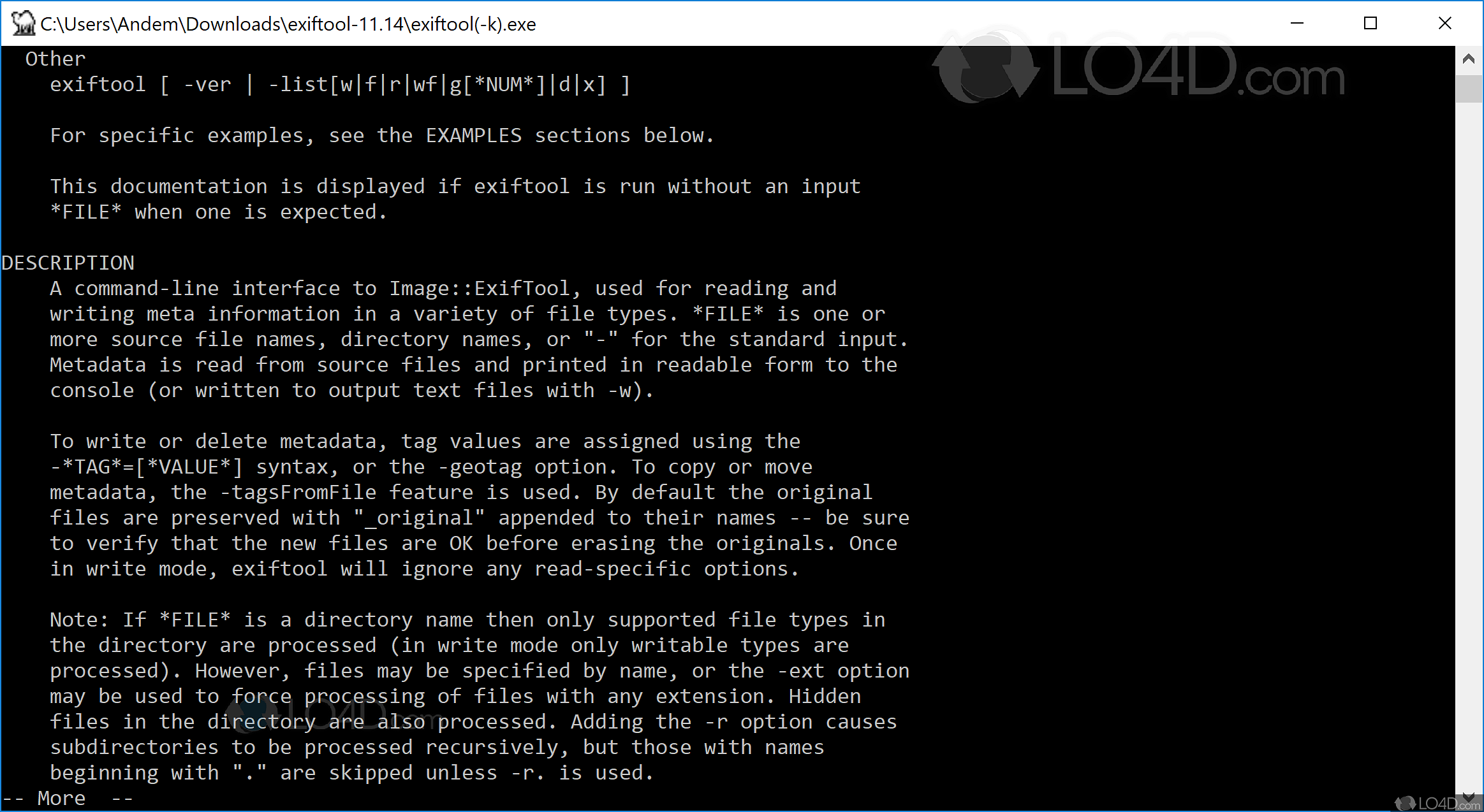

If no tags are specified, all possible information The remaining scalar arguments are names of tagsįor requested information. The first scalar argument is taken to be the file name unless an earlierĪrgument specified the image data via a file reference (file ref) or data Object-oriented functions below to obtain additional information if required. That after ImageInfo returns, you may use the The advantage of using the object-oriented form of this function is ImageInfo may be called with an ExifTool object ifĭesired. Taken to be the file name unless a file reference or scalar reference comesīelow is a more detailed explanation of how the ImageInfoįunction arguments are interpreted. The order of the arguments is not significant, except that the first SCALAR is Reference (a reference to the image in memory). The one required argument is either a SCALAR (the imageįile name), a file reference (a reference to the image file) or a SCALAR

Passed to it, and interprets them based on their type. ImageInfo is very flexible about the arguments $info = $exifTool-> ImageInfo($filename, Arguments: $exifTool-> Options(Unknown => 1, DateFormat => '%H:%M:%S %a. My = qw(filename imagesize xmp:creator exif:* -ifd1:*) My $filename = shift || die "Please specify filename\n" Using an ExifTool object to set the options before calling ExifTool object referenceġ) File name, file reference or scalar referenceĢ-N) list of tag names to find (or tag list reference orĮxamples: Non object-oriented example showing use of options and returning tag list: Generate the returned information hash and tag list. Internally, ImageInfoĬalls ExtractInfo to extract data from the image, and This is the one-step function for obtaining The ExifTool "noConfig" flag before loading Image::ExifTool. If necessary, the configuration feature can be disabled by setting " ExifTool_config" in the ExifTool distribution for User-defined tags can be added via the ExifTool configuration file. $exifTool-> WriteInfo('image.jpg','modified_image.jpg')

$exifTool-> SetNewValue(Author => 'Phil Harvey') See ImageInfo for a more detailed description of theĪnd the technique for writing meta information is equally simple: Simplified example which prints out this information: The $info value returned by ImageInfo in the aboveĮxamples is a reference to a hash containing the tag/value pairs. The object-oriented method allows more flexibility, but is slightly moreĬomplicated. My $info = $exifTool-> ImageInfo('image.jpg') Or in a more object-oriented fashion, by creating an ExifTool object: The ExifTool module may be used by simply calling the
#Image exiftool how to#
The following sections of this document give examples of how to use Image::ExifTool,Īnd explain the following individual functions in more detail: Write meta information in a wide variety of image, audio and video files. The Image::ExifTool library provides an extensible set of Perl modules to read and Image::ExifTool The Image::ExifTool Perl Library Module Description


 0 kommentar(er)
0 kommentar(er)
